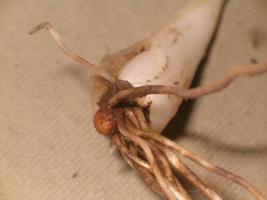 | Back to e-WV
| Back to e-WV
 The West Virginia Encyclopedia
The West Virginia Encyclopedia
 | Back to e-WV
| Back to e-WV
 The West Virginia Encyclopedia
The West Virginia Encyclopedia

Moonshine, beets, and black walnuts. Biscuits and gravy. Meat loaf, mashed potatoes, and green beans. The foods of West Virginia are a combination of fast, slow, old, new, from-the-land, and ethnic. West Virginia food habits arose from the state’s land forms, climate, settlers, and, since the Industrial Revolution, from a blending of transportation, communication, and appliances.
Long before peanut butter and microwave ovens found a place in the kitchens of West Virginians, Native Americans living in the area of West Virginia hunted black bear, buffalo, and white-tailed deer. They gathered hickory nuts, walnuts, chestnuts, persimmons, and cherries, and they raised corn, pumpkin, squash, and beans.
When the first settlers of European descent arrived, Iroquois, Cherokees, and Shawnees taught them to gather and preserve foods. These settlers were probably Welsh, Scotch-Irish, and German, and they had no choice but to hunt and gather if they wanted to survive. Among their favorite wild food plants were ramps, poke, lambs quarters, creasy or cress, and dock. In addition to large game, they hunted rabbit, raccoon, squirrel, fox, opossum, wild turkey, ruffed grouse, and water fowl. The mountains of West Virginia were rich with game while the streams yielded brook trout, muskellunge, bass, and walleyed pike.
By the mid-19th century, most people living in the area of Virginia that was to become West Virginia worked small farms and did not keep slaves. Different ways led to a division in Virginia and the eventual formation of the new state. Identification with the North during the Civil War is reflected in West Virginia’s food preferences. From areas to the north they adapted scrapple, Swiss cheese, wine, and kraut. They prepared rhubarb pie, buckwheat cakes, light potato rolls, salt-rising bread, and meatballs. As in the South, corn, grits, and country hams were also popular. West Virginia’s food traditions became a mixture of North, South, and Mountain State.
As the state moved from an agrarian to an industrial economy, many families continued to gather herbs, rob wild honey, raise gardens, milk cows, and keep hogs. Company towns in the state’s coalfields commonly provided space for gardening, and often even for the keeping of stock. Some West Virginians processed corn into moonshine and fresh pork into country ham. Beef consumption did not become popular until after the arrival of electricity, which in some rural parts of the state did not occur until the 1950s.
Today, many West Virginians continue to hunt, gather, garden, and farm, carrying on traditions that predate European settlement. Often served at dinner-on-the-grounds, homecomings, family reunions, and Christmas and Thanksgiving celebrations, some favorite Mountain State foods include fried apple pies, pan-fried chicken, country-fried steak, chicken and dumplings, macaroni and cheese, cheese grits, spoon bread, baked sweet potatoes, chow chow, corn relish, coleslaw and sauerkraut, leaf lettuce wilted in hot bacon grease, ‘‘dryland fish’’ or fried morels, pork sausage, wild berry pie, cherry cobbler, and black walnut fudge. A common winter favorite is soup beans cooked with salt pork or ham hock and served with skillet-baked corn bread, onions, and perhaps a glass of buttermilk. The special gravies of West Virginia include chicken, sausage, potato, ham, and tomato, and the gravy biscuit was popular here long before it was taken up by fast-food restaurants. At community suppers and festivals civic groups prepare ramps in season, dandelion greens, apple butter, wild grapes, and dried apple stack cakes.
When it comes to food, change is often the only constant. Already, two generations of West Virginia children have begged for McDonald’s hamburgers and Kentucky Fried Chicken. Since the early 1980s, microwave ovens have speeded the pace of preparation, and supermarkets have added great choice, but even today the old-time apples, ramps, honey, and wild game of West Virginia have a place when we gather to eat.
Written by Mark F. Sohn
Sohn, Mark F. Mountain Country Cooking: A Gathering of the Best Recipes from the Smokies to the Blue Ridge. New York: St. Martin's Press, 1996.
Sohn, Mark F. Hearty Country Cooking: Savory Southern Favorites. New York: St. Martin's Press, 1998.
"Foods and Things: West Virginia Grown," Pamphlet. West Virginia Department of Agriculture, 1999.